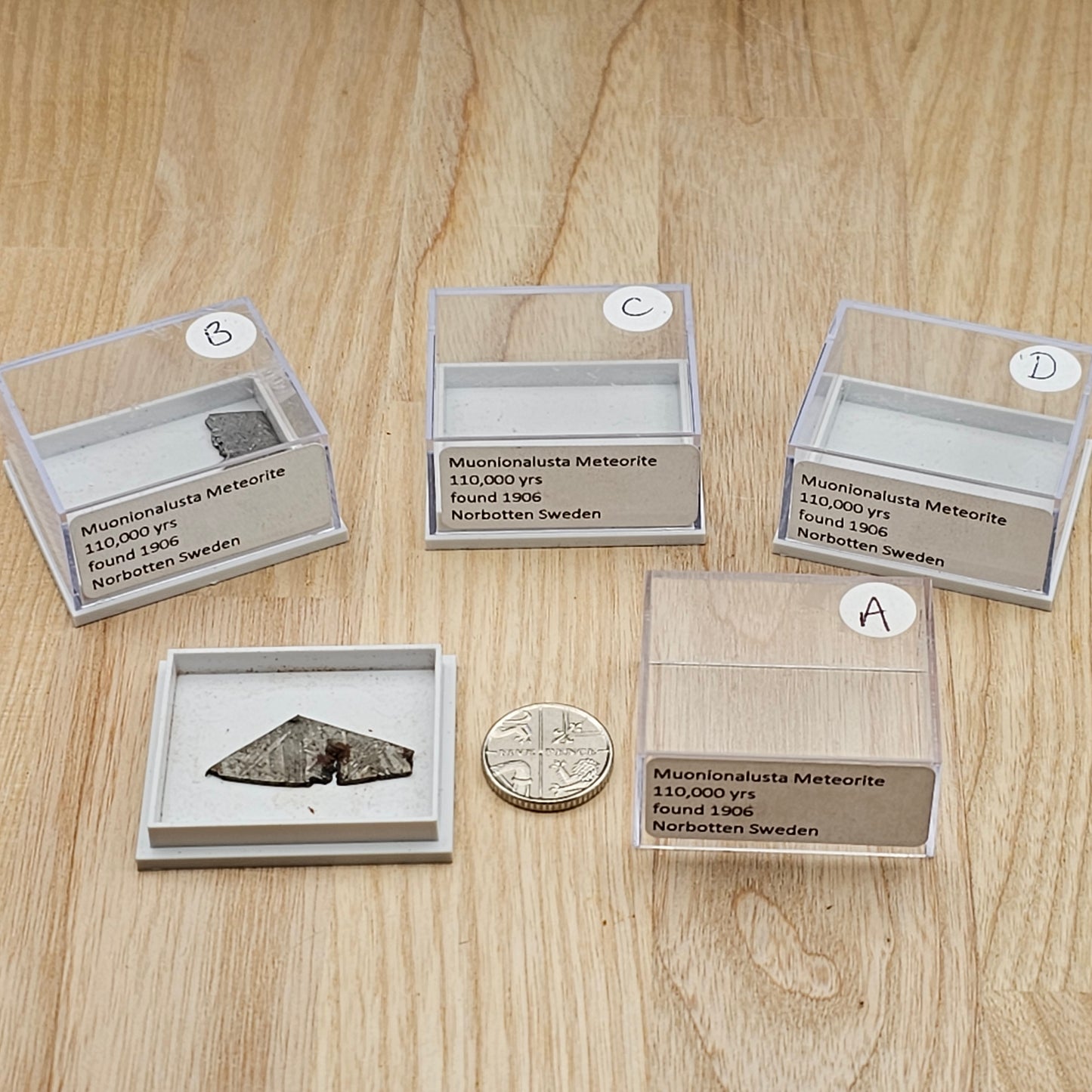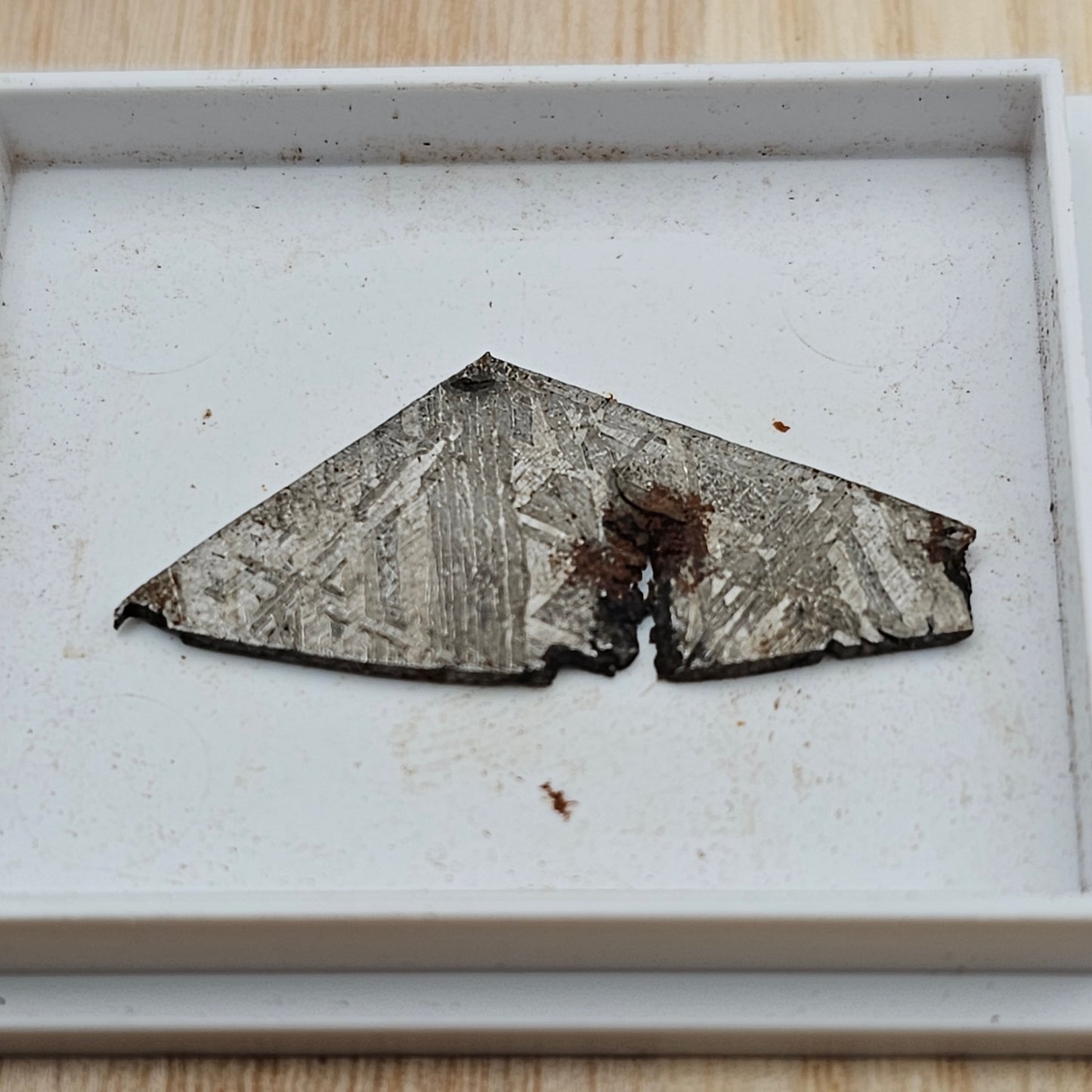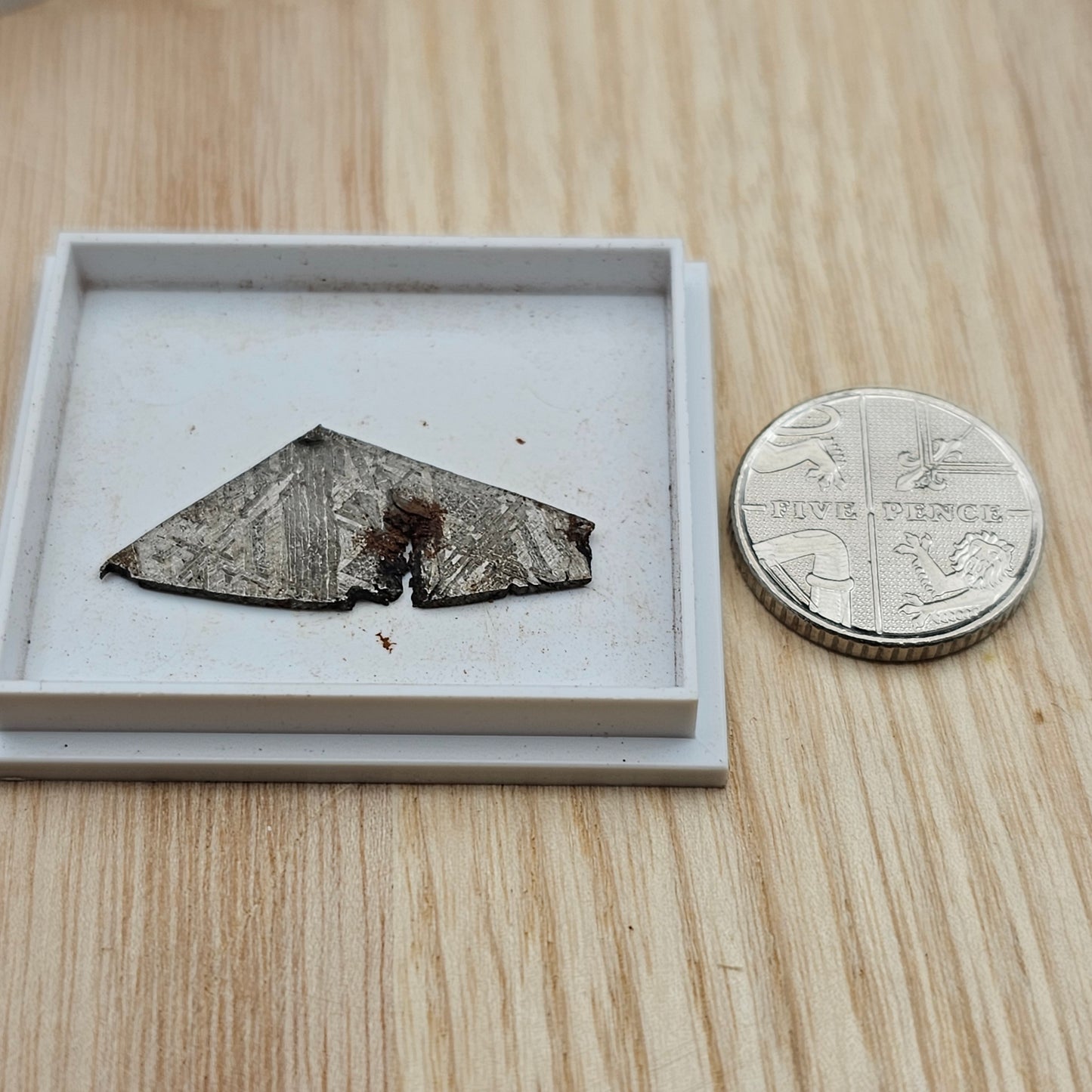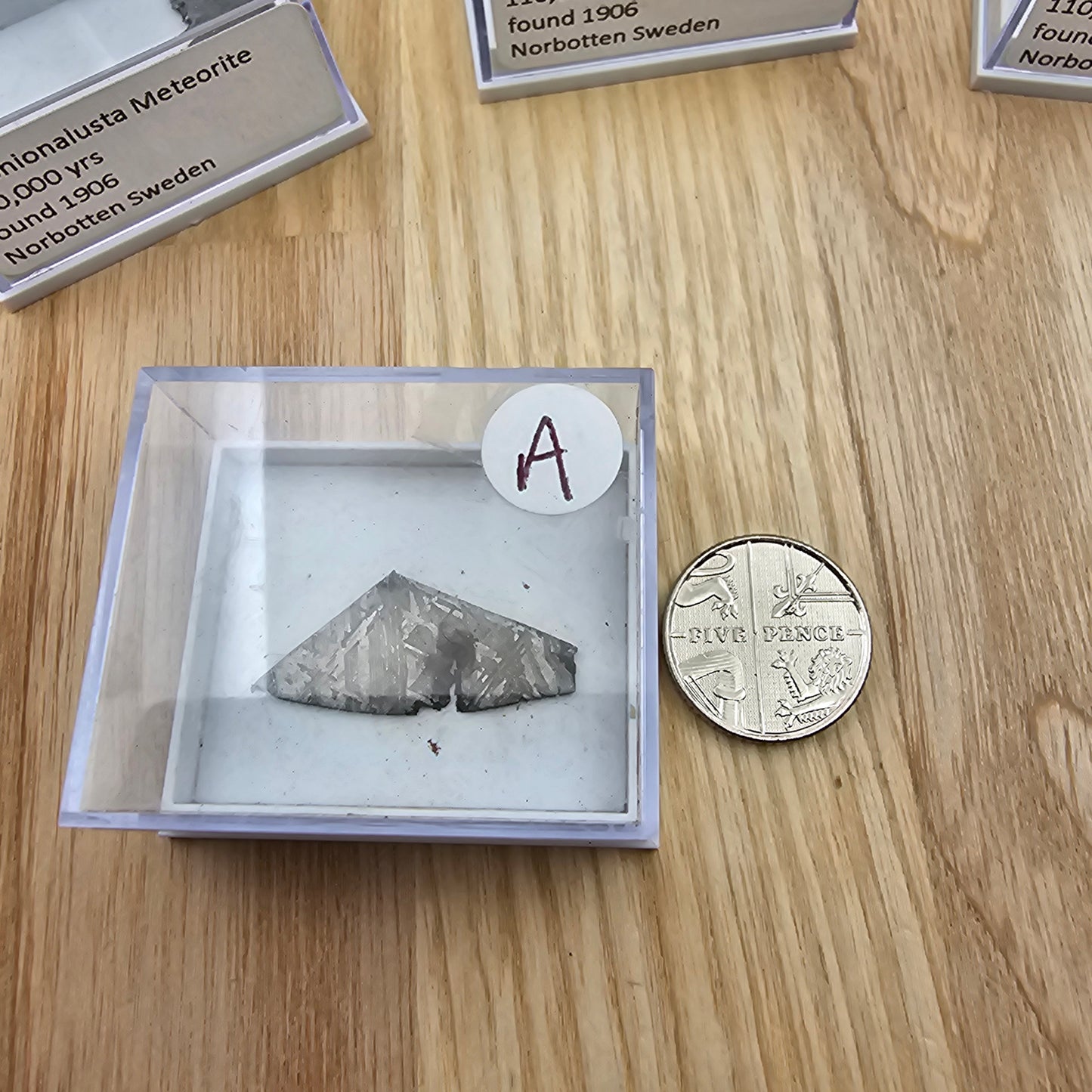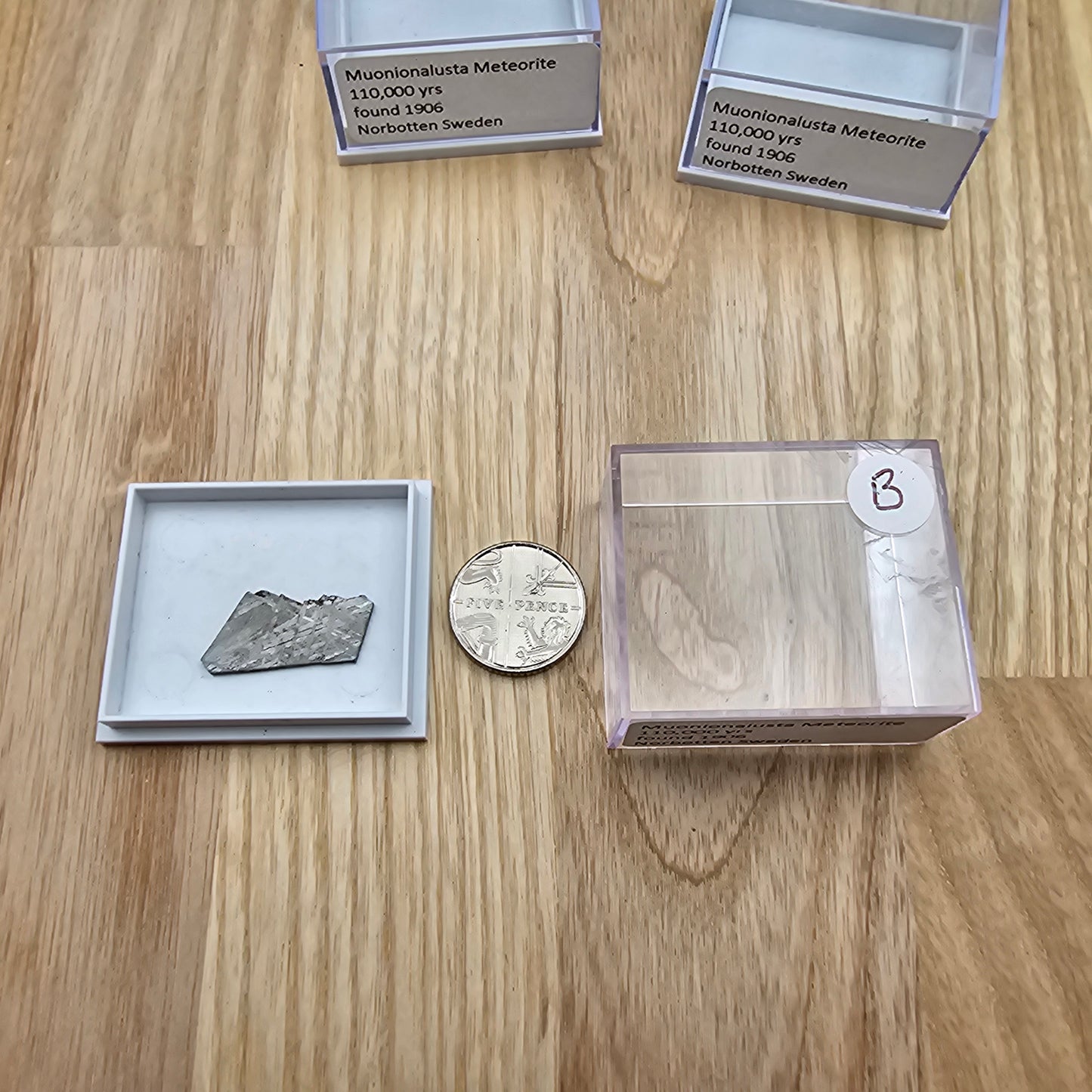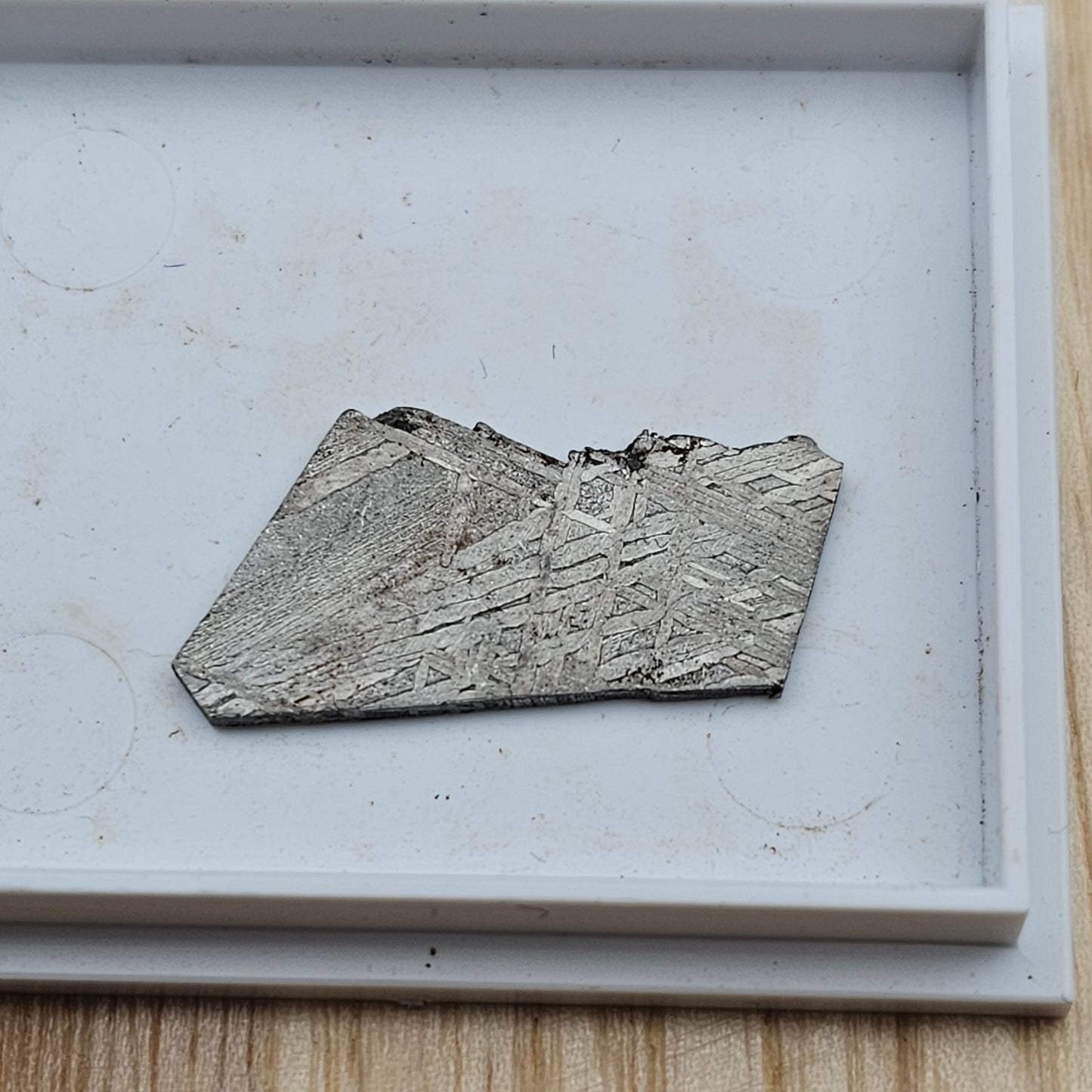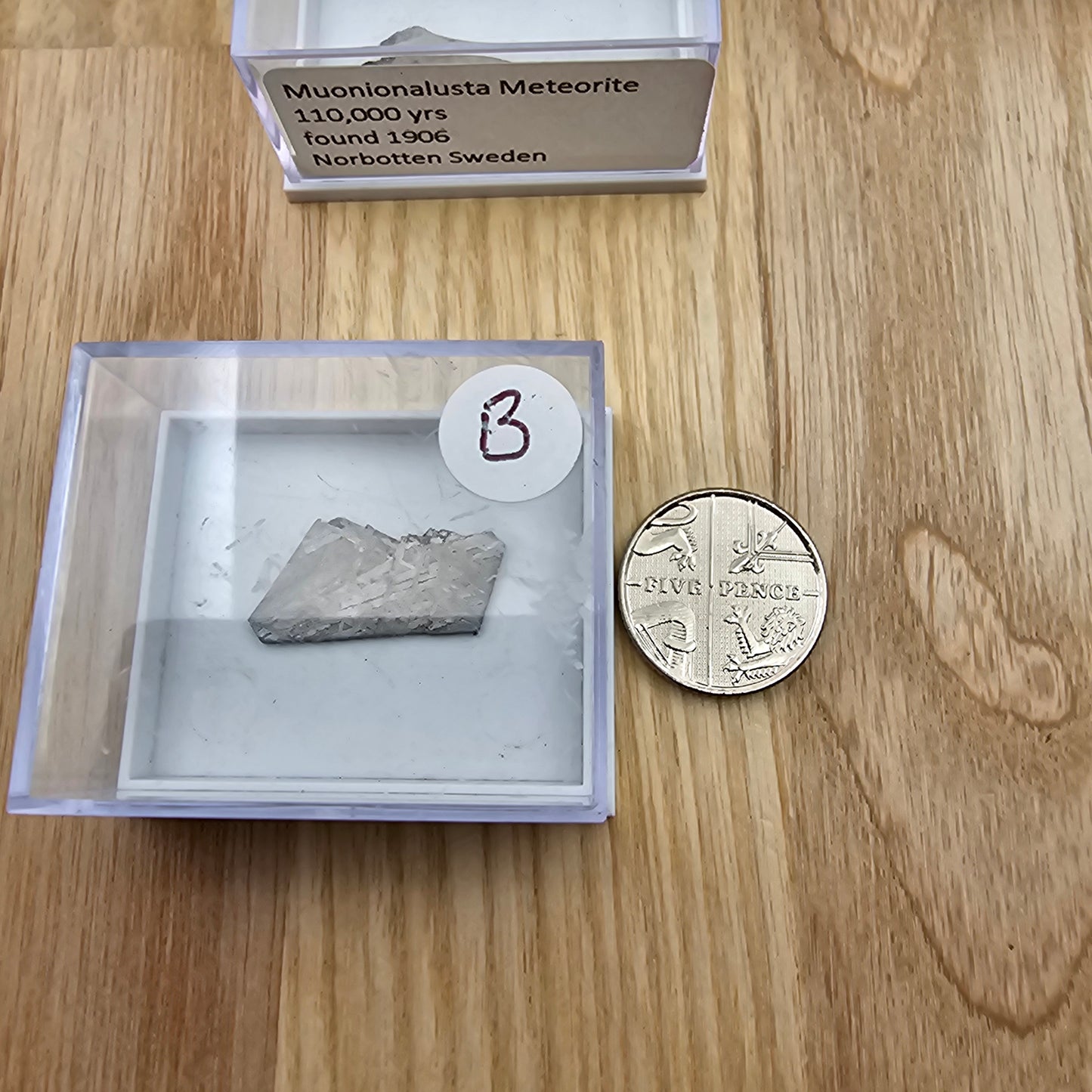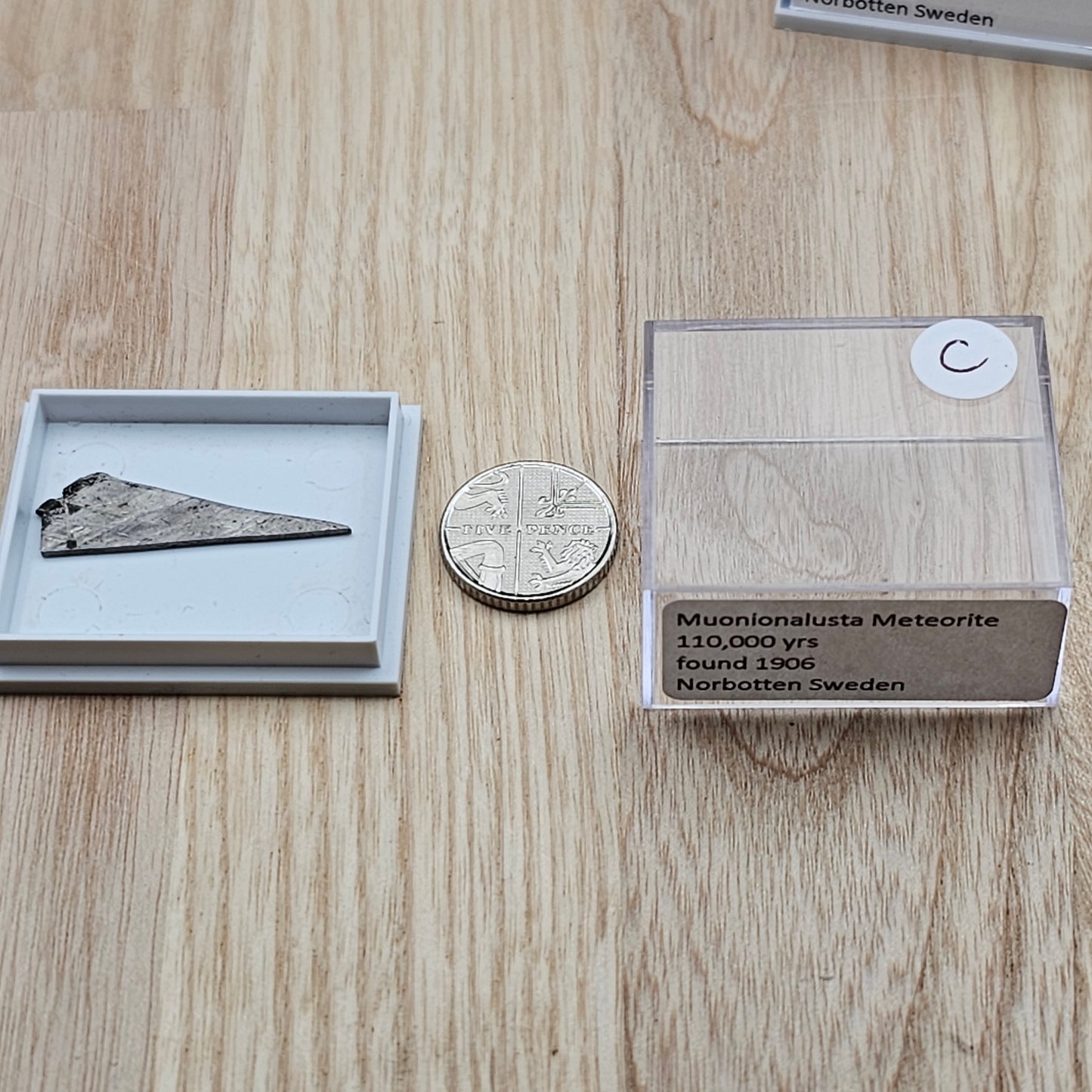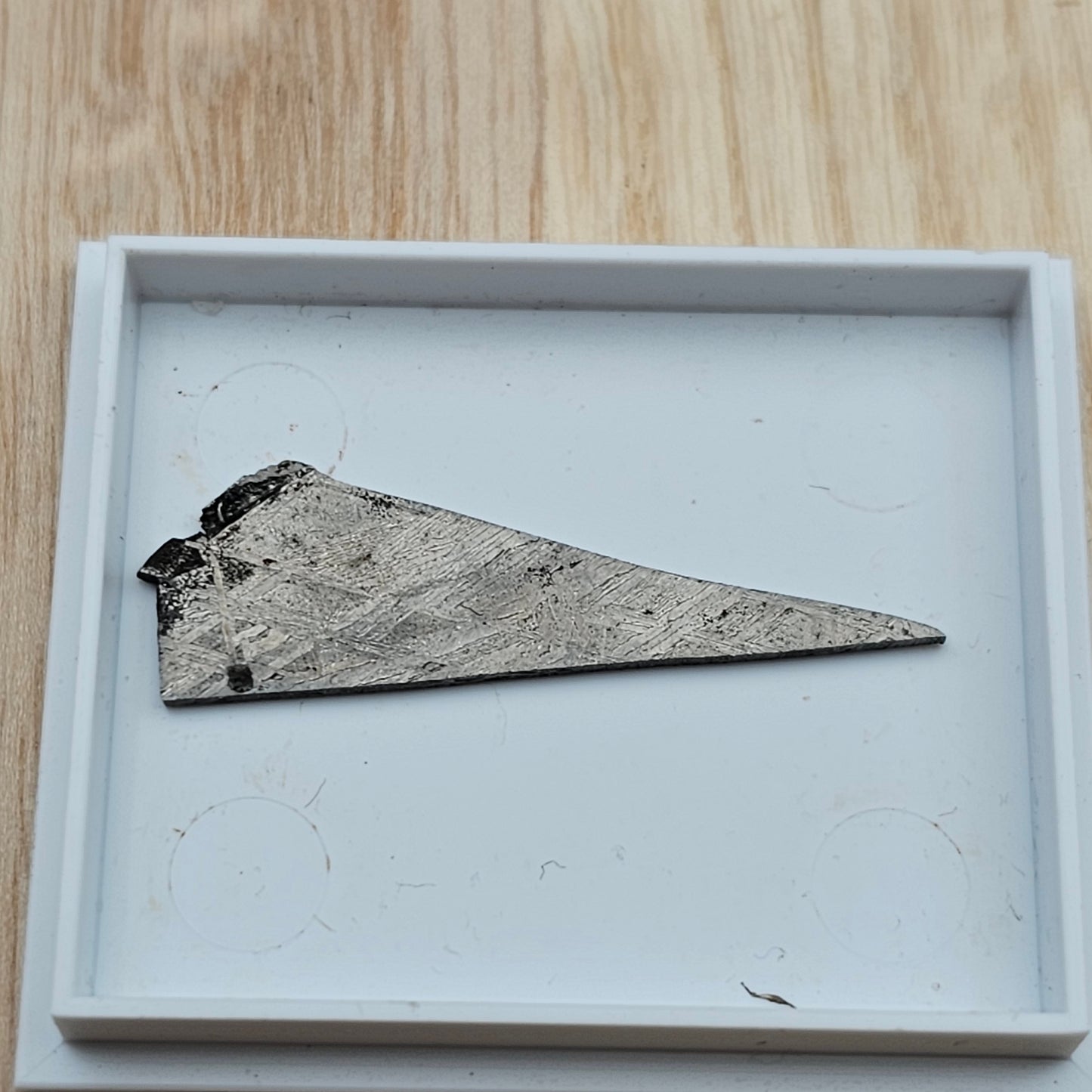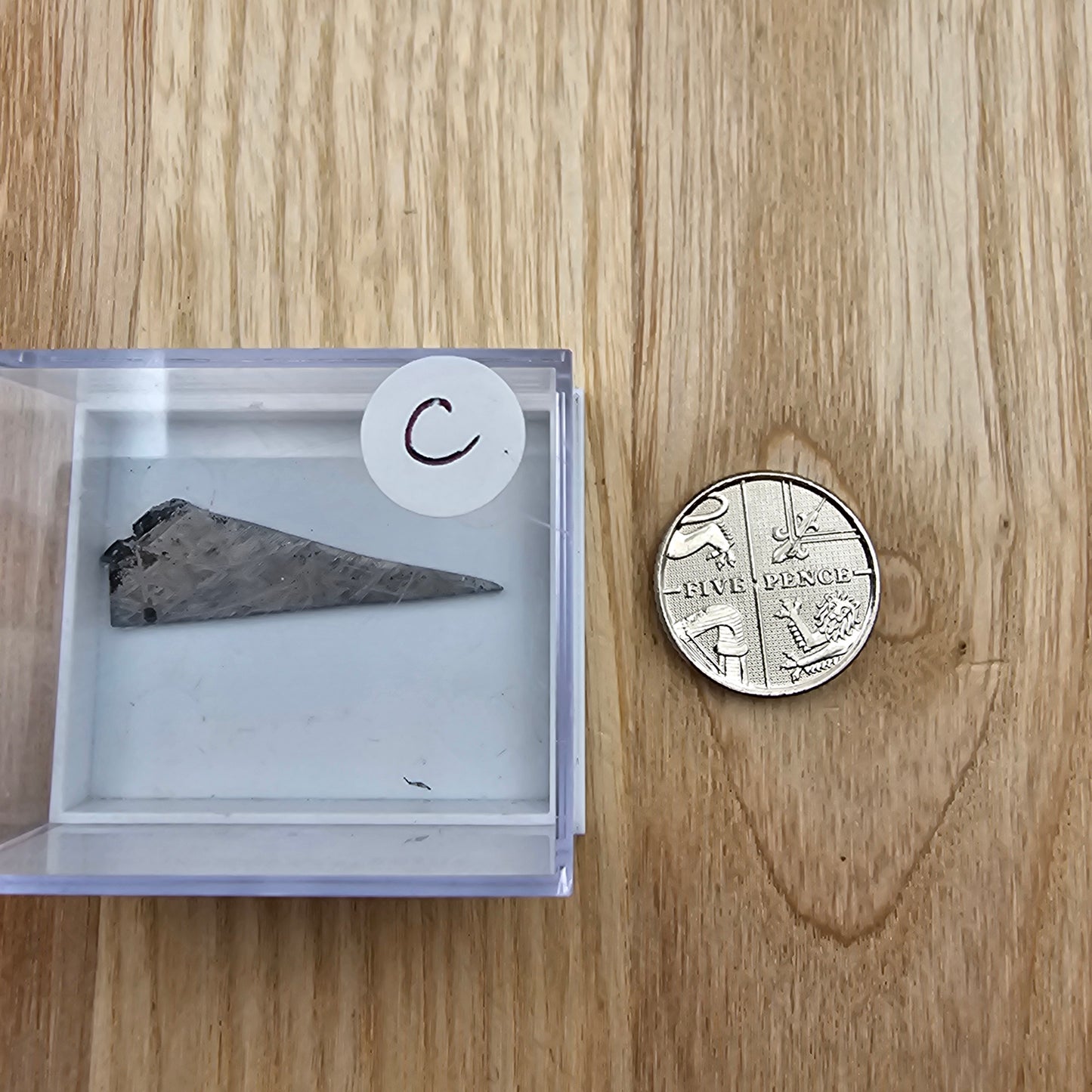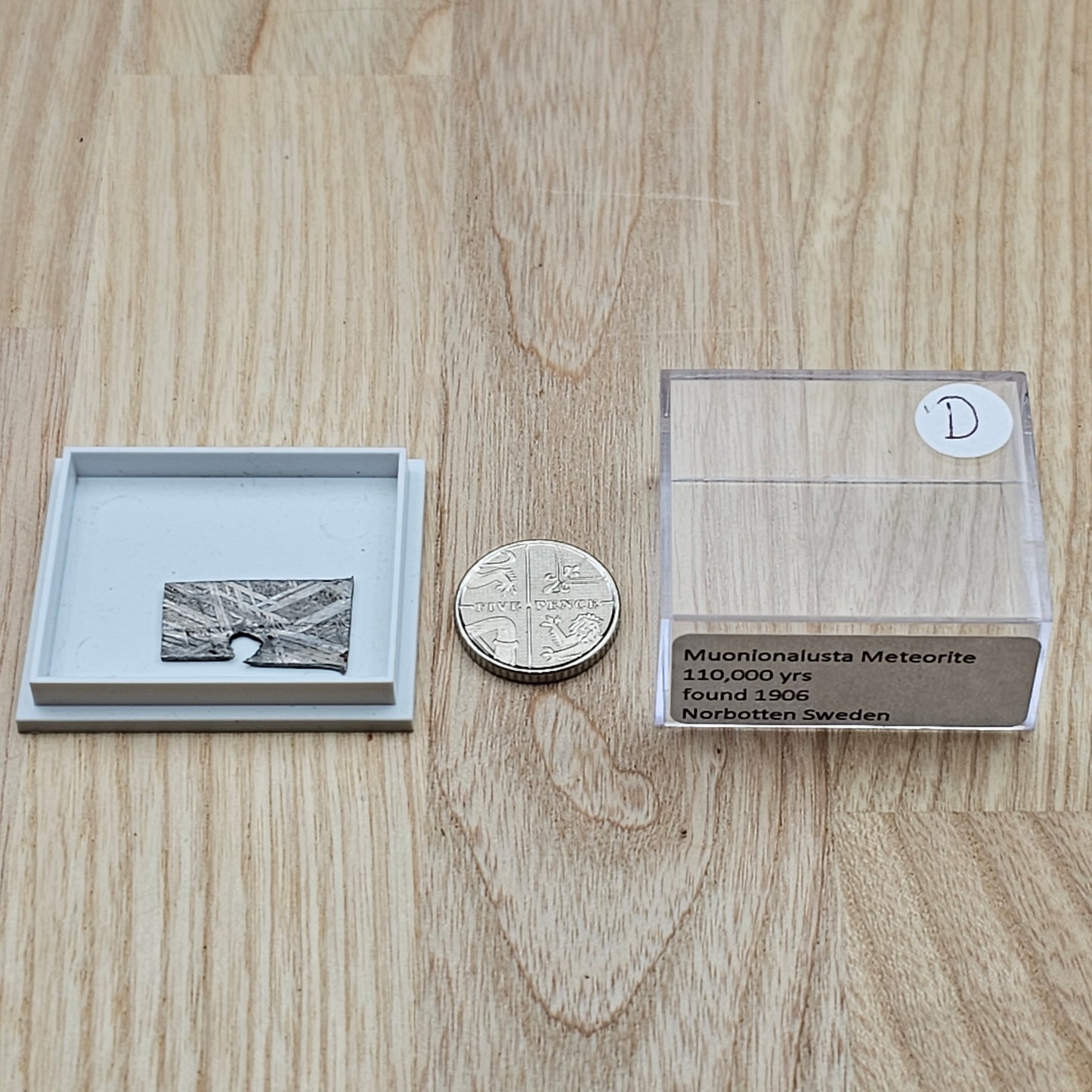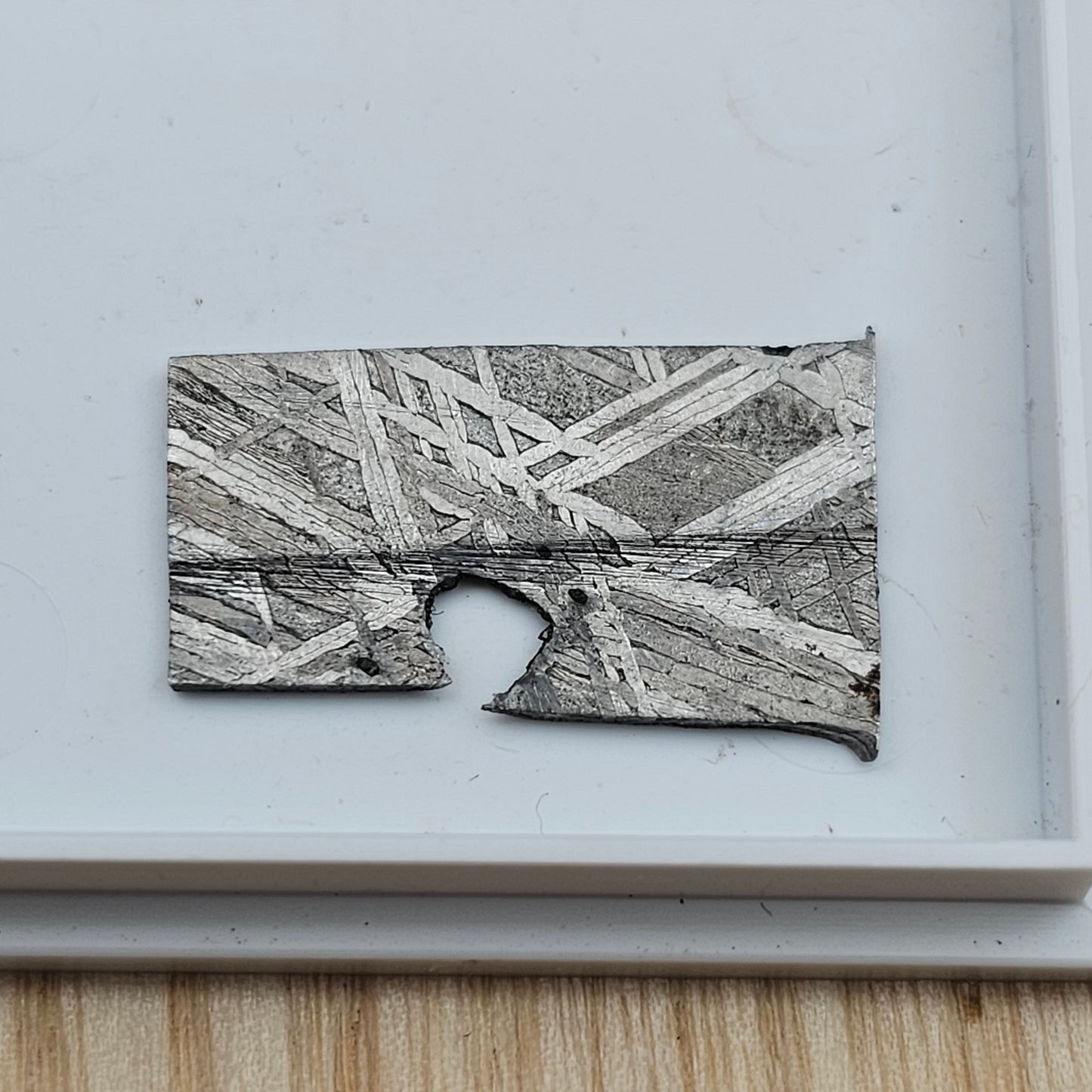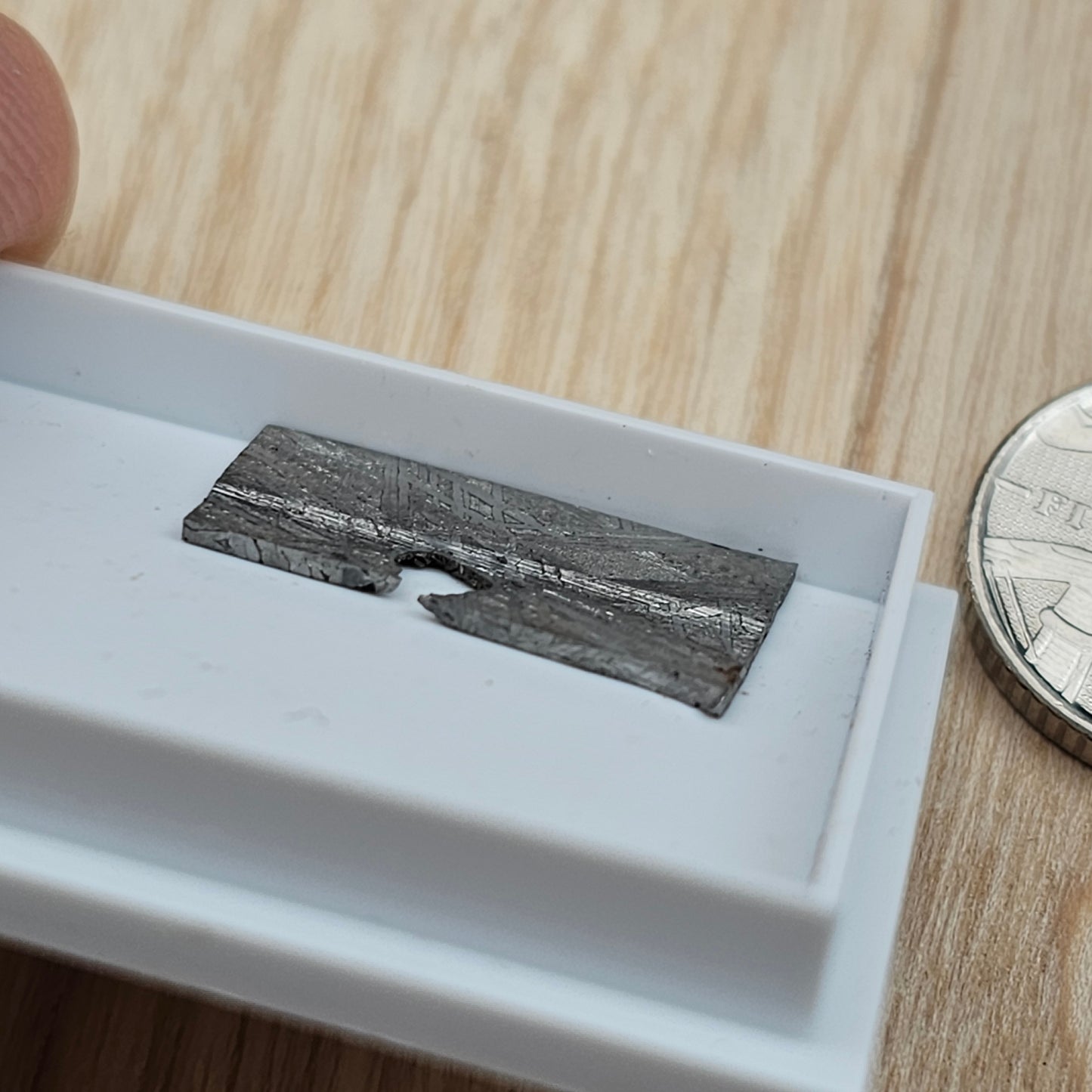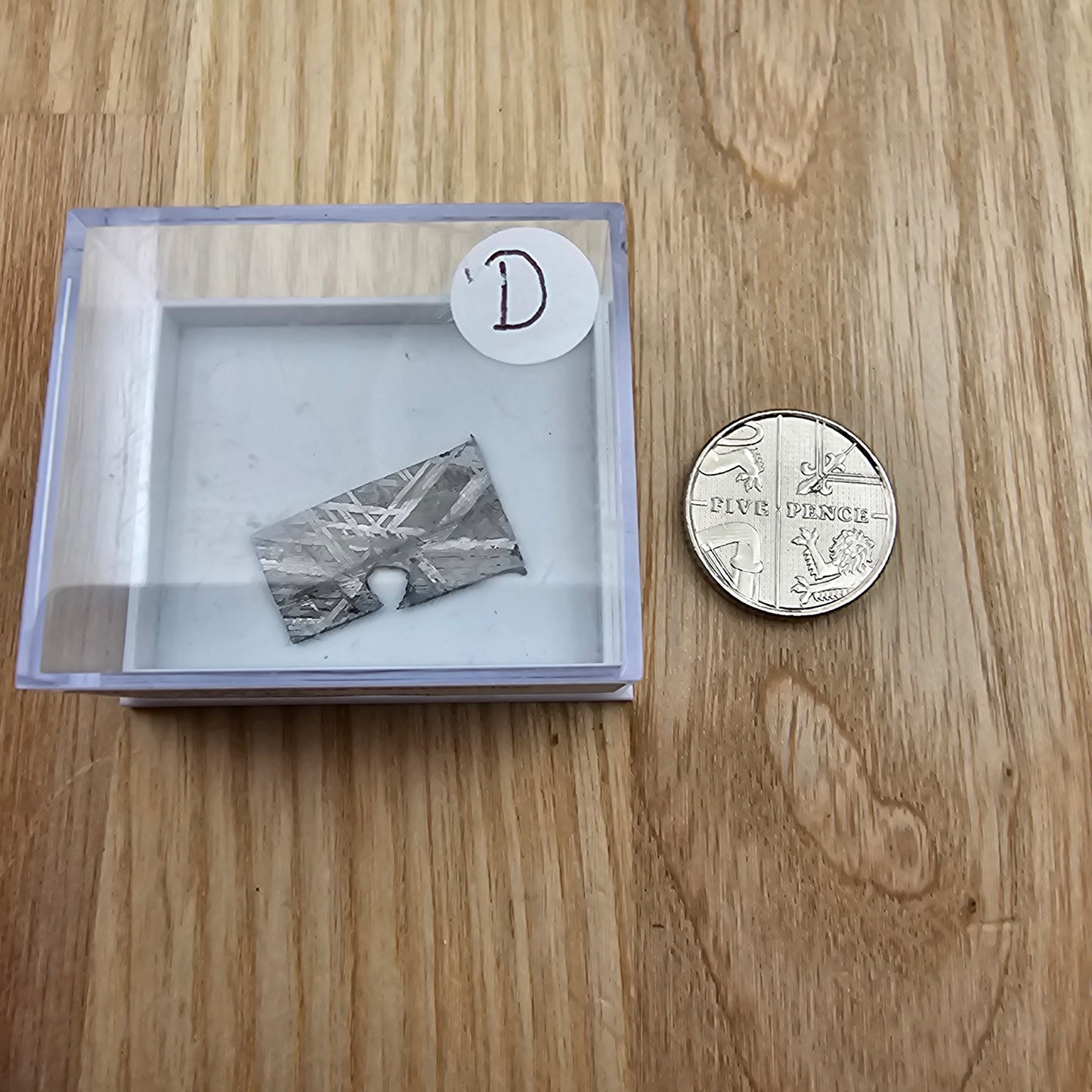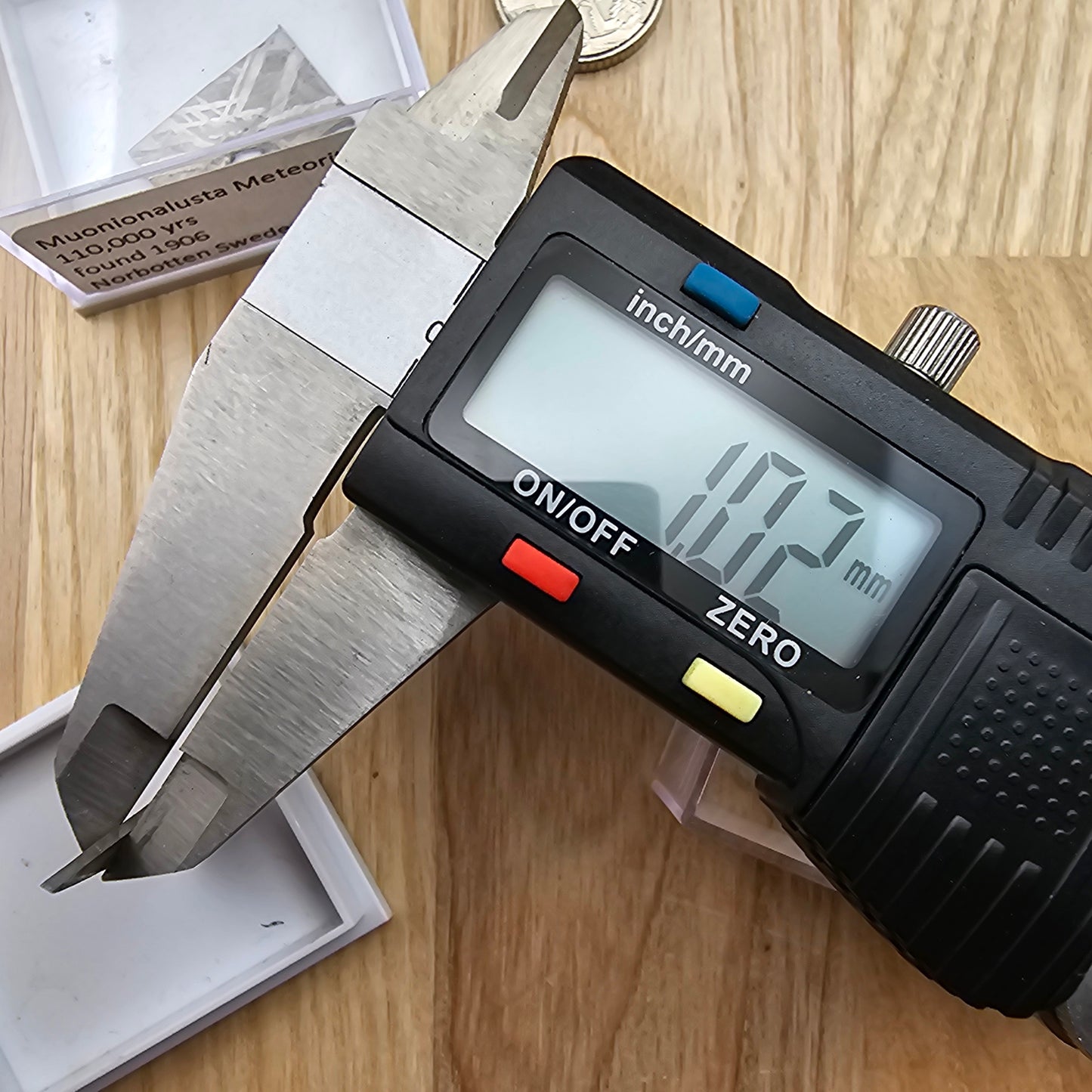The Kent Crystal Cave
Muonionalusta Meteorite Slices with Widmanstatten
Muonionalusta Meteorite Slices with Widmanstatten
Couldn't load pickup availability
These ultra rare slices of the Muonionalusta meteorite, found in 1906 in Norbotten, Sweden, show a classic example of the Widmanstatten pattern. It is the oldest iron meteorite in the world at 4,570-million years of age (4.57 Billion).
Widmanstätten patterns, are figures of long nickel-iron crystals. They consist of a fine interleaving of kamacite and taenite bands or ribbons called lamellae. Commonly, in gaps between the lamellae, a fine-grained mixture of kamacite and taenite called plessite can be found.
The Muonionalusta is a meteorite classified as fine octahedrite, type IVA (Of) which impacted in northern Scandinavia, west of the border between Sweden and Finland, about one 1 million years ago. The first fragment of the Muonionalusta was found in 1906 near the village of Kitkiöjärvi.
The Muonionalusta meteorite is believed to contain healing properties and benefits that can help with emotional balance and spiritual growth. It's known to resonate with the Crown chakra, which is believed to provide extraterrestrial awareness and improve mental clarity. Jewellery pieces made of this material can also serve as an original and unique gift to those fascinated by astral travels, giving them a journey through space and time.
The Muonionalusta Meteorite is considered a highly spiritual and cosmic stone in metaphysical circles. It is associated with:
Cosmic Connection: Facilitates a deep connection to the cosmos, universal consciousness, and higher realms of awareness.
Grounding and Protection: Despite its extraterrestrial origins, it is also grounding, helping to anchor higher energies into the physical body and protect against negativity.
Transformation: Encourages personal transformation and adaptation, aligning with the energies of change and evolution.
Meditation: Enhances meditative states, allowing for profound insights and cosmic connections.
Energy Work: Ideal for grid-work and spiritual practices that involve balancing higher and lower energies.
Meteorite Value - Why Is Muonionalusta Meteorite So Valuable?
“The Muonionalusta meteorite is truly something special, " says astrophysicist Dr. Thomas Müller, based at Munich’s Max Planck Institute for Extraterrestrial Physics. He is a scientific adviser to the BMW NIGHT SKY project and an enthusiast to the Muonionalusta meteorite. It has proved to be the oldest iron meteorite we have on Earth. Its value also lies in its extraordinary aesthetics, as the exquisite Widmanstätten patterns are marked on this meteorite.
Scientific Importance of the Muonionalusta Meteorite
The Muonionalusta Meteorite is a fascinating scientific artifact because it offers insights into the earliest stages of our solar system's formation. Here's why it is significant:
- Oldest Solid Material: At 4.57 billion years, it formed during the initial condensation of metals and silicates in the solar nebula, providing a snapshot of early solar system chemistry.
- Widmanstätten Pattern: The meteorite's crystalline structure is a hallmark of extraterrestrial iron-nickel alloys. This pattern forms only in the vacuum of space, under slow cooling conditions over millions of years—estimated at 1°C per million years. This makes it a rare and unearthly phenomenon.
- Parent Body: The meteorite likely originated from the core of a differentiated asteroid, possibly destroyed by a collision during the chaotic early solar system. Studying it helps scientists understand planetary core formation.
- Stability: The Muonionalusta survived entry into Earth's atmosphere and remained buried in the ice of Scandinavia, preserving its composition remarkably well.
Chakras: All, especially crown
Planet: Saturn, Uranus
Zodiac: All
All are close to 1mm thick
The "110,000" on sticker refers to the estimated time of its last major exposure to Earth's surface or to glacial movement—approximately 110,000 years ago. This corresponds to the time when:
-
Glacial Retreat: The meteorite might have been exposed by the shifting glaciers during the last Ice Age, which began around 110,000 years ago and ended roughly 12,000 years ago.
-
Terrestrial Age: It could also indicate the meteorite's terrestrial age—the time it has spent exposed on Earth's surface since being uncovered from glacial deposits.
This is a common practice for labeling meteorite samples, as their terrestrial age (time on Earth) is often distinct from their cosmic age (formation in space).
